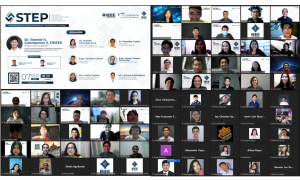By Augusto Herrera, IEEE GOLD Region 9

On August 23rd, the XIV Student Branch Regional Meeting (RRR – Reunión Regional de Ramas) was held in San Juan, Argentina. During the first day of this meeting, we held a TISP workshop in between other activities.
The overall event (both the meeting and workshop) was organized by the National University of San Juan Student Branch (UNSJ SB), with support of the Argentina GOLD AG and the Region 9 TISP Team.
The workshop was attended by more than 100 students from over 15 sections of Region 9 and more than 10 teachers from pre-university schools, the primary focus of the program.
This workshop was notable for both the enthusiasm of the attendees and the large number of systems designed. Two activities were featured: Rotational Equilibrium and Critical Load.
After the workshop, the Region 9 TISP Team highlighted the proliferation and success of the TISP program within the region. We note that holding a TISP workshop at the Regional Meeting of Student Branches is significant because it represents a commitment by the Student Branches to carry out the program within their Sections.
On September 24th-25th, a new TISP workshop was organized in Tegugigalpa, Honduras as part of the XXXI CONESCAPAN Congress, the biggest technological student event in the CAPANA (Central America and Panama) Council. The workshop was organized by IEEE EAB with the support of the Honduras Section, the National Autonomous University of Honduras Student Branch (UNAH SB), and the Region 9 TISP Team.
In attendance at the workshop were over 200 students from various sections of Region 9, mostly from within the CAPANA Council.
It is notable that three activities were developed at the workshop. The first day’s activity was Ship the Chip, followed by Wind Energy and Critical Load on the second day. Also notable were the large number of participating students, their enthusiasm to continue participating in the program, and the significant number of systems built.





